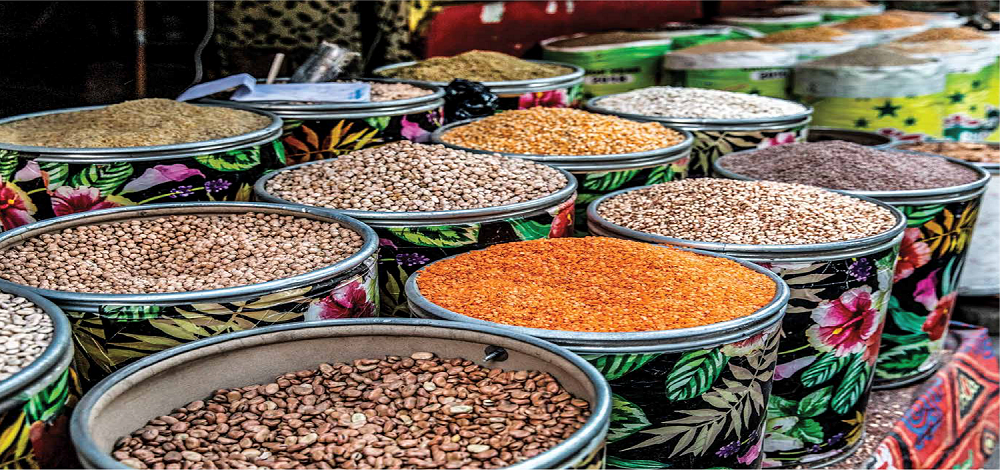Trade Finance: CFC’S inclusive model serving exports of SME's in developing countries
On 17 September 2020, the Common Fund for Commodities held a webinar about CFC’s inclusive model serving “trade finance” needs of SME’s in developing countries. Lack of access to finance is often cited as one of the main barriers for trade. Finance is key for maintaining strong committed trading relationships along the value chain, but SME’s often do not manage to get the finance they need. The CFC facilitates the international market potential of enterprises in commodity chains by trade finance, bridging the liquidity gap from the time of sourcing of produce from farmers to payment by the importer.
The CFC supports SME’s by a trade finance loan, which is not only aimed at facilitating the payment gap at time of shipment, but also accommodating the working capital needs of the exporter to ensure that the farmer can be paid on time. Timely payments to the farmers upon delivery of their produce are essential in building sustainable trading partnerships along the value chain.
Financing for businesses in commodity chains can be obtained in many different forms. Trade finance is of relevance for SME’s in the agricultural commodity sector as it facilitates their access to international markets. In turn, SMEs income increases with resultant impacts that CFC so keen to have.
Traditional trade finance instruments bridge the payment gap between a buyer and seller: the seller or exporter wants to assure payment for its product before shipment, while the buyer wants to pay upon receipt of the goods. By providing products such as trade credit, letters of credit, or guarantees both parties will get their needs satisfied.
In most developing countries, agricultural lending to SME’s is perceived as high risk and financial institutions tend to avoid it. Yet, the vast majority of trade finance requests by SMEs is rejected, against 13% for multinational companies, thus suggesting that global liquidity is concentrated within the biggest institutions and their clients. Enterprises active in commodity dependent countries face even more challenges, with SMEs accounting for up to 70-90% of the Gross Domestic Product (GDP), affecting poor rural groups and particularly women for whom agriculture is the main source of income.
Collateral requirements for agricultural lending can be high, thereby excluding SMEs that do not have enough assets to raise the finance they need. To relieve the plight, the CFC relies on the strong relationship between the exporter and its buyer, rather than on collateral. In the loan agreement between the CFC and the exporter, both parties agree that cash advances are based on sales contracts. In addition, the exporter will instruct its buyer to make full payment of the invoices arising out of its contracts directly to the CFC. This is agreed in a so called Tripartite Repayment Instruction, which is signed by the exporter, the buyer and the CFC.
Sales revenues from such contracts that directly flow into the account of the CFC add a level of security. Yet, this is not without risks, for example during periods with high commodity price volatility. The CFC will also rely on the exporter’s operational and management capacity to fulfil its orders and to comply with the quality requirements.
CFC’s trade finance loan benefits different value chain actors involved. It builds sustainable trading partnerships, providing SMEs the liquidity needed during the cash-intensive harvest season. It enables SMEs to scale exports by grasping market opportunities without collateral requirement, and establish close relationships with both its farmers and its clients. Farmers benefit from an immediate offtake, timely payments in cash, and potentially advance payments. Buyers can build long term relationships and a more stable supply base for commodities sourced from developing countries. This is fundamental in developing a strong value chain with impact-driven SMEs sourcing from smallholder farmers. Growing consumer awareness of global trade issues and emphasis on responsible sourcing practices are also driving this change.
Trade finance could provide a pathway for growth, and the CFC often uses it as a starting point for a future investment plan, especially for SMEs with a strong social or environmental agenda. If successful, it provides a solid basis for supporting enterprises in their diversification strategy or plans to venture into value-added products to reduce vulnerability to commodity price fluctuations.
Striving to achieve the Sustainable Development Goals (SDGs) set for the UN 2030 Agenda, trade finance contributes to SDG1 (No poverty), SDG2 (Zero Hunger), SDG5 (Gender Equality), SDG8 (Decent work and economic growth), SDG9 (Industry, innovation and infrastructure), SDG12 (Responsible consumption and production), and SDG17 (Partnerships for the goals). Access to trade finance unlocks and promotes the contribution of commodity business to development and livelihoods in developing countries.
Please write to us with your comments and questions at managing.director@common-fund.org.

